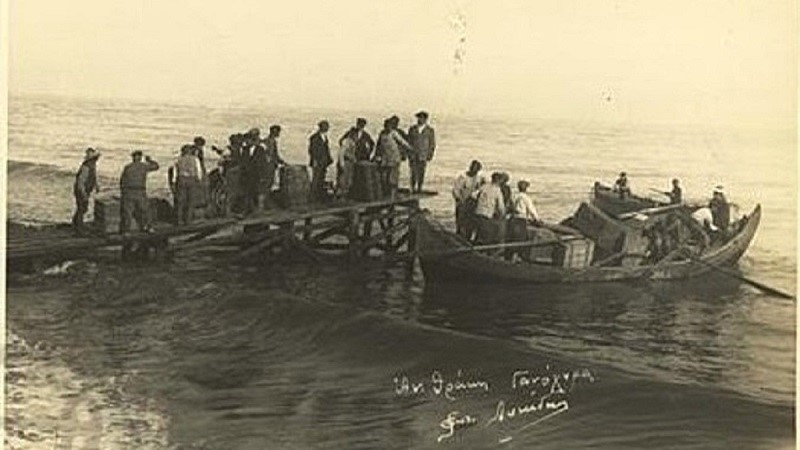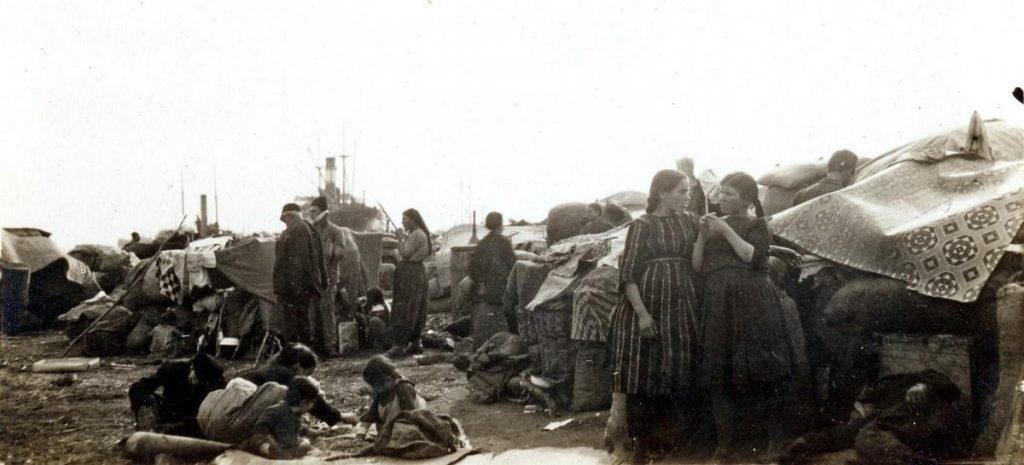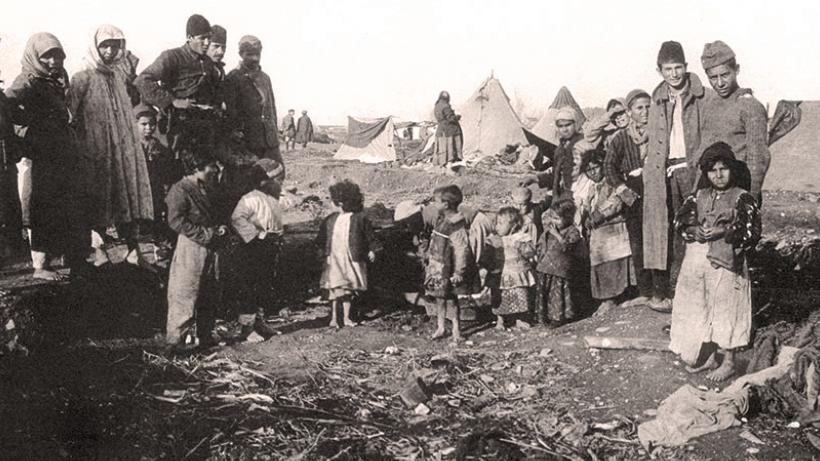By Marina Siskos.
April 6 marks the Remembrance Day for the genocide of Thracian people. For Thrace, Easter of 1914 was the Black Easter.
Implications of injustice, massive destruction and extermination of the Thracians extends to the present as the genocide affects the formation of identity and consciousness of their descendants.
Collective memory moulds identity: mentality, discourse, self-perception and all its dimensions, material and non-material culture, literature and mythologies, directly or indirectly refer to the past and the suffering, the need for remembrance and the what should have been.
Systematic atrocity: Backdrop of the Genocide of Ottoman minorities
The turn of the 19th century heralds the collapse of the “multi-ethnic, multi-religious Ottoman Empire,” manifested among a host of factors, such as the weakening of its once robust army, by the emergence of national independence movements, in tandem with opposing, imperialist European powers (Hoffman, 2022).
The movement of Young Turks, officially the Committee for Union and Progress (CUP), gave threatening rise to the Ottoman nationalism. As early as 1910, the German ambassador described violence as a seemingly unavoidable tool of “Ottomanization,” as the merger of numerous ethno-religious groups in the Ottoman Empire, reports Hoffman (2022). Months before the outbreak of the first Balkan War in 1912, retaliation had become a motif for destruction of the indigenous Christians in the Ottoman Empire, according to Hoffman (2022), while the Balkan Wars of 1912-1913 completed this radicalisation, as the actions against the Greek population of Eastern Thrace and the littorals of Asia Minor prove, concludes Hoffman (2022).
Namely, in early June 1915, Talaat, member of the CUP triumvirate, informed the German Embassy at Pera (Constantinople) about his government’s intention “to use the opportunity of the World War thoroughly to eliminate their internal enemies – the indigenous Christians of all denominations – without being disturbed by diplomatic interventions from abroad” (Hoffman, 2022).

The Scale of the Genocide
Raphael Lemkin (the jurist who invented the term genocide in the 1940s) (Verdeja, 2012) has defined genocide as “the systematic destruction of whole national, racial or religious groups. The sort of thing Hitler did the Jews, and the Turks did the Armenians” (1946). Genocide is called the “crime of crimes,” “an odious scourge,” says Verdeja (2012). Its devastating aftermath persists through the generations.
The Greek Genocide began in the region of Eastern Thrace, otherwise known today as European Turkey or Turkish Thrace (Greek Genocide Center). At the beginning of the 20th century, the population of Greeks in Eastern Thrace was over 350,000; during the genocide, many of these people were exiled to Greece, while 100,000 were deported to the interior of Asia Minor but only half of them returned (Greek Genocide Center). Between the years 1912-1913, 15,690 Greeks were massacred in Eastern Thrace (Greek Genocide Center). In October 1922, Eastern Thrace was ceded to Turkey after the signing of an Armistice at Mudanya following the Hellenic military defeat in Asia Minor (Greek Genocide Center). Numerous killings and murders occurred during the Balkan wars, in particular at the time when the Ottoman army reoccupied Eastern Thrace in February 1913 (Hoffman, 2022). These massacres were organised by three successive governments, those of the Ottoman Sultan Abdulhamid I, the Young Turks and, finally, Ataturk (Morris, Ze’evi, 2019).
However, the persecutions in Thrace, observes Hoffman (2022), exceeded the traditional slaughters of Christians. This was the first time that thousands of Greeks were systematically dislocated from their villages and intentionally subjected to exhaustion and starvation during death marches, which were officially branded as relocations (Hoffman, 2022). Vakalopoulos, a Greek historian who concentrated on Thrace, mentions that, prior to the Balkan Wars, the Greek population of East Thrace numbered more that 350,000 people (Hoffman, 2022). The central commission of the Ecumenical Patriarchate, which was seated in Constantinople and supervised the re-integration of Greek Orthodox refugees following WWII, said 232,000 more Greeks from Eastern Thrace had been compelled to immigrate to Greece (Hoffman, 2022).

The term cumulative genocide (coined by Hoffman), means the serialised destruction, conducted in phases and with subsequently changing “crime scenes” in various areas of Eastern Thrace and Asia Minor (Hoffman, 2022).
Atrocities, burning, looting, expropriation, systematic deportation and slaughtering of the Ottoman minorities escalated up until 1924, exterminating the Armenian, Pontiac and Syriac populations. Winston Churchill called the World War I annihilation of the Ottoman Armenians “one administrative holocaust” (The Times, 1921). Arthur Neville Chamberlain confirmed the assessment of the situation, as given by High Commissioner Rumbold: “The Turks appear to be working on a deliberate plan to get rid of minorities” (The Times, 1922). The Turkish policy is extermination of these Christian minorities (New York Times, 1922). By 1924, the Christian communities of Turkey and its adjacent territories had been destroyed (Morris, Ze’evi, 2019).
Recognition of Genocide
Identity Shaping
The result of continued massive deportation and dissemination of hundreds of thousands of people since the Balkan Wars was a truly uprooted population (Hoffman, 2022). One burning question arises: how do the sufferers and their descendants, namely, us, process the trauma of such unspeakable scale? Does the pain express itself? Is the collective trauma of genocide, debasement, displacement reiterated into the narrative of our lives?
Hacking (1995) suggests that the only way to overcome these problems is to recover the memory of the original trauma and acknowledge it. For Hirschberger (2018), trauma fosters a sense of a collective self that is transgenerational thereby promoting a sense of meaning and mitigating existential threat.
Memory, says Eyal (2004), is the guarantor of identity and maintains it through time – a mechanism for retention responsible for the experience of being a self-same individual moving through time; memory, however, plays a role in overcoming psychic trauma and the processes of dissociation it sets in motion. Based on Maurice Halbwachs classical formation, collective memory “provides the group [with] a self-portrait that unfolds through time… and allows the group to recognise itself throughout the total success of images” (Eyal, 2004). Anthony Smith concurred: “one might almost say: no memory, no identity, no nation”. Nations, writes Rosenberg (1995), like individuals, need to face up to and understand traumatic past events before they can put them aside and move on to normal life.
Collective identity is anchored to a shared set of beliefs about the past. Collective trauma, an outcome of war and genocide enshrines the development of collective identity to the descendants of sufferers and outlives history. Everyday remembrance to the injustice and the sufferings is detected in the simplest rituals, daily discourse, material culture and folklore art. Being an ancestor of genocide victims or survivors forges an omnipresent sense of loss.
References:
- Eyal, G. (2004). Identity and Trauma: Two Forms of the Will to Memory Author(s): Gil Eyal Source: History and Memory, Vol. 16, No. 1 (Spring/Summer 2004), p.p. 5-36. Indiana University Press. URL: https://www.jstor.org/stable/10.2979/his.2004.16.1.5.
- Greek Genocide Resource Center. Eastern Thrace: The First Phase of the Greek Genocide. https://www.greek-genocide.net/index.php/overview/documentation/eastern-thrace.
- Hacking, I. (1995). Rewriting the Soul. Blackwell, U.K.
- Halbwachs, M. (1996). The Collective Memory.
- Hirschberger, G. (2018). Collective Trauma and the Social Construction of Meaning. Frontiers of Psychology, 10 August 2018. https://doi.org/10.3389/fpsyg.2018.01441.
- Hoffman, T. (2022). Γενοκτονία Εν Ροή. Cumulative Genocide. The Massacres and Deportations of the Greek Population of the Ottoman Empire (1912-1923).
- Morris, B., Ze’evi, D.(2019). When Turkey destroyed its Christians. The Wall Street Journal. When Turkey Destroyed Its Christians – WSJ.
- New York Times. (1922). Kemalist War on Christians, Says 22,000 Greeks died on the March. New York Times, June 7, 19223.
- Rosenberg, T. (1995). The Haunted Land: Facing Europe’s Ghosts after Communism. Random House.
- Smith, R. (2015). The Ottoman Genocides of Armenians, Assyrians, and Greeks. Genocide Studies International. Spring 2015, Vol.9 (1). University of Toronto Press. URL: https://www.jstor.org/stable/10.2307/26986011.
- The New York Times. (1946). Genocide Under the Law of Nations. The New York Times, January 5, 1947; Genocide, The New York Times, August 26, 1946.
- The Times. (1921). The Turk at Work. October, 26, 1921, 11. Greek Genocide Resource Center. 26 Oct 1921: The Turk at Work: Rape Murder and Arson, The Times (greek-genocide.net).
- The Times. (1922). Turkish Deportations-Confirmation of the Times Telegram. The Times, May 16, 1922, 21.
- Verdeja, E. (2012). The Political Science of Genocide: Outlines of an Emerging Research Agenda. Perspectives on Politics. June 2012, Vol. 10, No. 2 (June 2012),p.p. 307-321. Published by: American Political Science Association. URL: https://www. jstor.org/stable/41479553.


